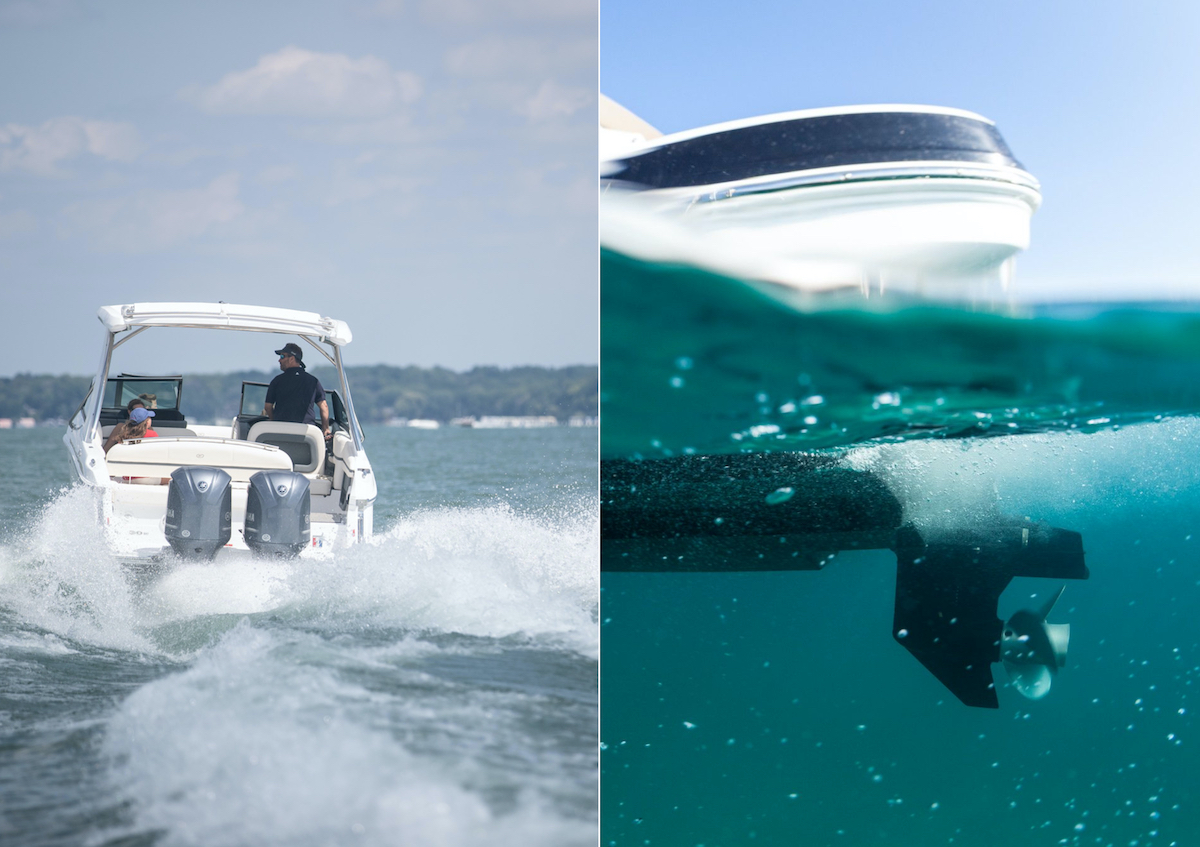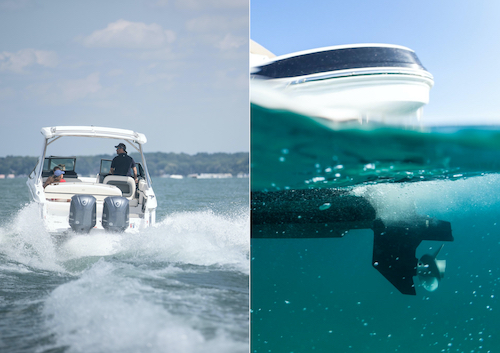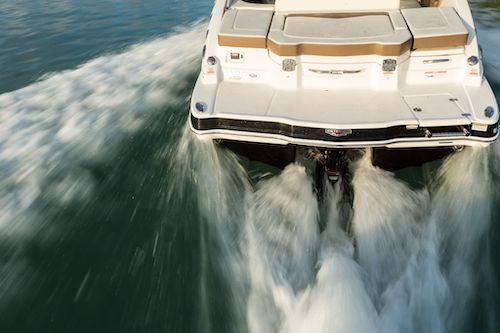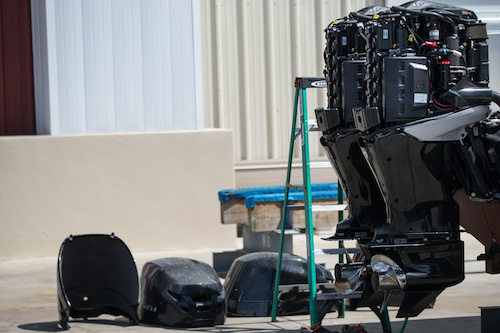Many family boats, including bowriders, deck boats and cabin cruisers, are offered with a choice of outboard or inboard power. When both options are available, is there a better choice between the two? Let’s take a look at inboard vs. outboard boat motors, and dig deeper into the advantages and disadvantages of each type of power.
Explore All Boat Motor Types & Brands
What are the Key Differences Between Inboard and Outboard Motors?
Family boats with inboard power are almost always equipped with a sterndrive (sometimes called an inboard/outboard or I/O) powertrain, which combines an automotive-type engine mounted inside the boat with a steerable and trimable drive unit mounted on the stern (the back) of the boat. The exception would be for a dedicated watersports tow boat, which has an inboard engine turning a propeller under the boat, with steering control provided by a rudder.
Sterndrives are currently offered from 200 horsepower to 430 horsepower, but many compact runabouts on the pre-owned market may be powered by a 130-horsepower sterndrive that is no longer in production. An outboard motor is a dedicated marine engine that is attached directly to the stern of a boat.
Outboards are available from tiny 2-horsepower kickers to 600 horsepower, but for family boating the range is typically 90 to 300 horsepower. As outboard motors have become more powerful, they are gaining popularity on larger cabin cruiser and day boats that once were always equipped with inboard engines. These may be rigged with three or four outboards that combined make more power than the biggest pair of sterndrive engines available, resulting in performance that was once unimaginable.
Initial Cost Comparison
It seems natural to make a cost comparison based on horsepower—a 250-horsepower outboard to a 250-horsepower sterndrive in the same boat—but it’s smarter to make that comparison based on performance.
In this example, a 200-horsepower outboard will usually match the performance of a 250-horsepower sterndrive, simply because the outboard weighs less, and because that weight is more efficiently positioned behind, rather than inside, the boat. This rule of thumb holds true as you move up and down the horsepower scale. However, even with less horsepower the outboard-powered boat will often cost a little more—2 to 4 percent—than a similar boat with a sterndrive.
Inboard vs. Outboard Maintenance Costs & Ownership
Because it will usually weigh less and be a more-efficient design, an outboard motor will typically deliver better fuel economy than a sterndrive. Both will require similar annual maintenance, except that in cold climates the cooling system of most sterndrive engines needs to be flushed with antifreeze solution, usually by a marine service center.
- An outboard is self-draining and many owners can accomplish their own off-season service.
- Sterndrives once had a reputation for being more prone to corrosion-related issues in salt water, but corrosion resistance is much improved on modern engines and outdrives, and many can be equipped with a closed cooling system that keeps most saltwater out of the engine.
- However, most sterndrives can not be tilted completely out of the water, while most outboards can clear the water when tilted all the way up. This is an advantage for the outboard if the boat is docked or moored full time in saltwater, as it prevents marine growth and corrosion from occurring on the drive.
Serviceability
Because the entire engine is outside the boat, an outboard is easier to service than an inboard. With the boat on a trailer you can simply stand next to the outboard.
Servicing the inboard requires working under an engine hatch, often in pretty cramped confines. When an outboard is damaged or simply worn out, it is relatively easy to re-power the boat with a new outboard. Repowering an inboard boat is also an option, but a more-challenging project.
Boat Motor Maintenance & Engine Care Guide
Additional Pros & Cons
An outboard has many advantages over a sterndrive:
- It’s lighter, faster, more efficient, and easier to service;
- Because the entire engine is located outside the boat, there’s more room in the boat for seating or gear storage;
- A new outboard is cleaner, quieter and more powerful and feature-laden than the motors offered just a few years ago, all reasons they have become more popular on more types of boat.
A sterndrive does have some advantages, however:
- The drive unit is low on the transom, which permits a full-width boarding or swim platform that’s not cluttered by an outboard motor. This can really improve the lounging experience, and many people find this uncluttered look much more attractive.
- The sterndrive engine may also be covered by a padded sun lounge, another feature many owners appreciate.
- When equipped with a drive with forward-facing propellers (Volvo Penta Forward Drive or MerCruiser Bravo Four), the boat can be used for wakesurfing, an activity that’s not safe—or even legal on most waters—behind a boat with a traditional sterndrive or an outboard because of the proximity of the spinning propeller to the surfer. For many boating families, the ability to wake surf is reason alone to select an inboard with forward-facing props.
Read Next: Comparing Jet Boats vs. Sterndrive (Prop) Boats
You May Also Like:



